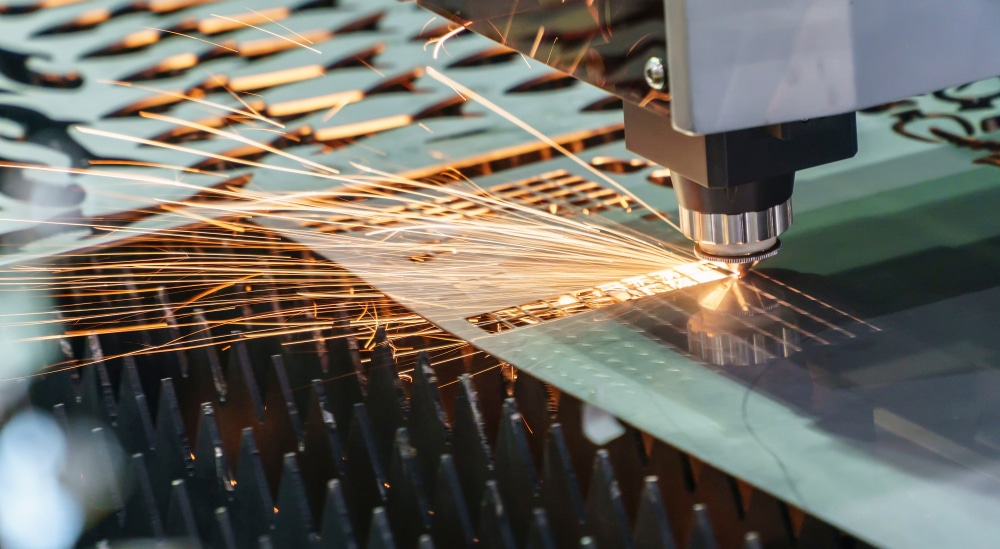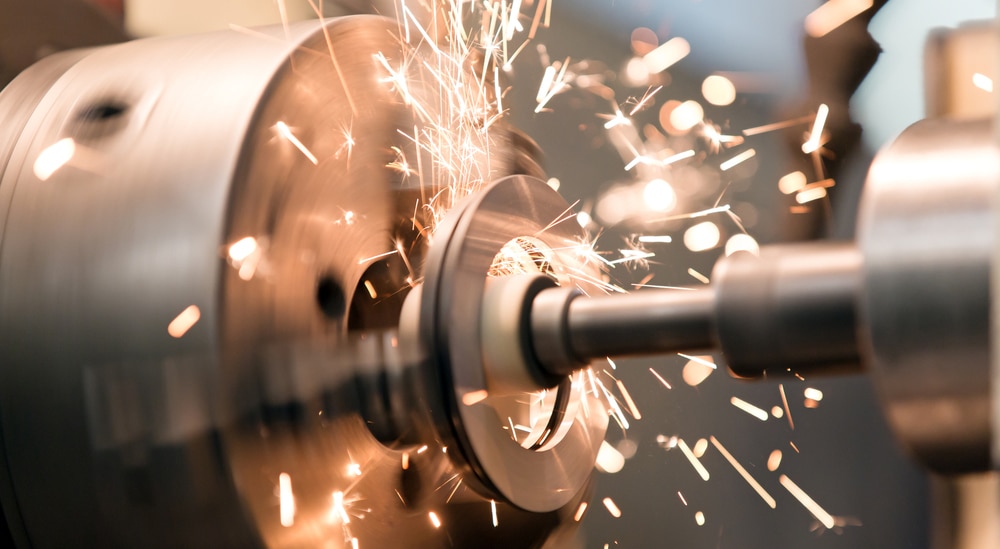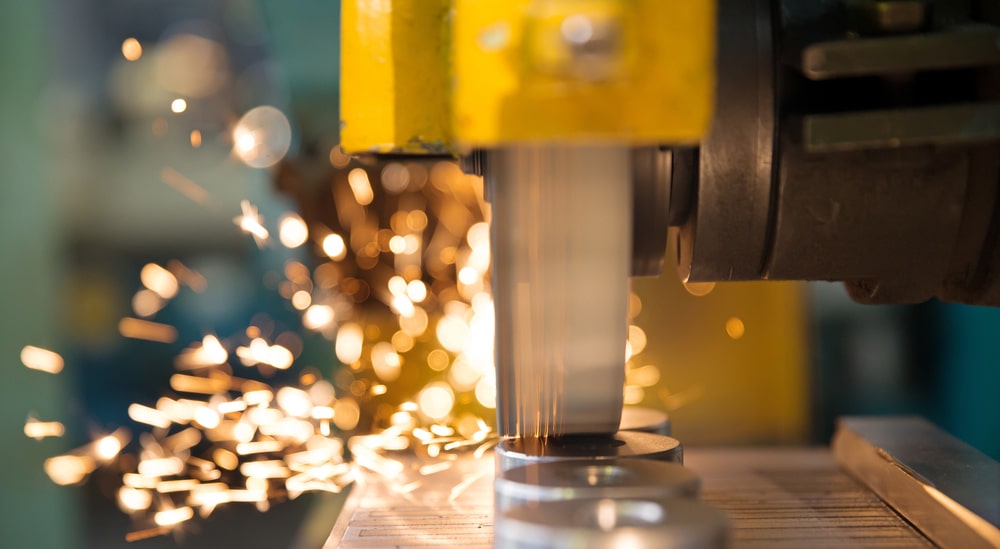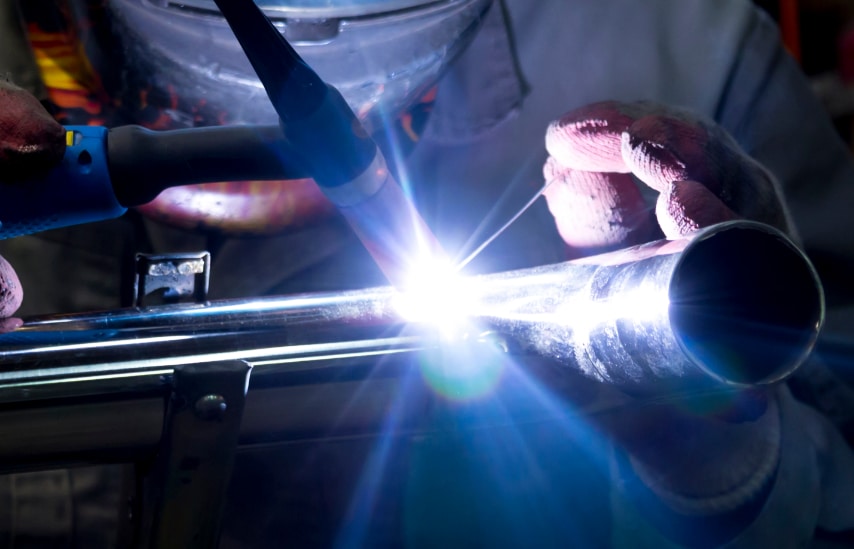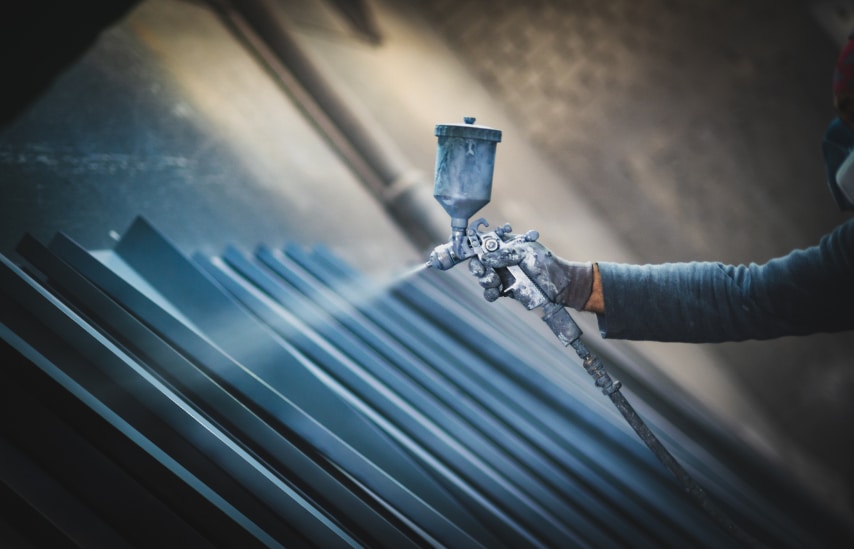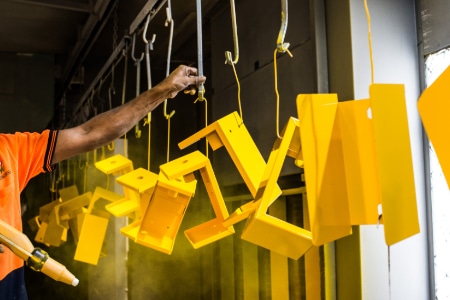Metal finishing is the final step in the manufacturing process. It is used for aesthetics and protection from external environments, such as rain and chemical cleaning sprays.
Nearly all types of metal products have a surface finish to complement their intended use. With numerous types of metal finishing processes, below we will go through the most commonly used metal finishes.
Powder Coating
Powder coating is a protective finish that involves adding a layer of melted plastic powder onto the metal product. There is the option to have either a glossy, textured or matte finish to the metal surface.
The charge in the metal holds the dry powder particles in place during curing at high temperatures. It’s an expensive method of finishing metal, and it offers an impact resistant surface. Powder coating finishes are available in many different colours and is beneficial for applications where aesthetics really matter.
An example of powder coating being used in real life is for road and direction signs. Despite outdoor conditions, such as rain and snow, the signs do not fade or corrode. The condition of all powder coated finished products do not corrode over the years.
Polishing
Polishing is an abrasive method that is used to improve the surface texture by reducing the surface roughness in metals, after it’s been manufactured. To do this abrasive wheels or mounted points and abrasive powders are used in conjunction with leather or felt wheels to polish down. Overall helping to improve the surface aesthetics.
Some examples of products which have a polished finish are jewellry, bronze and brass decor.
Galvanising
Galvanising is an essential step in the metal finishing industry that adds a protective zinc coating to steel products. During this process, steel components are dipped into a hot bath of molten zinc, usually at temperatures ranging from 460-482 °C.
The zinc coating serves as a shield, safeguarding the steel against harmful elements in its surroundings. By providing this protective layer, galvanising significantly boosts the steel's ability to withstand rust and corrosion, thereby increasing its longevity and durability for a wide range of uses.
Items such as steel beams, fences, pipes, and car parts can benefit from a galvanised finish, ensuring they remain resilient and long-lasting in various conditions.
Blasting
The process of blasting involves using high-speed abrasive materials to clean, smooth, or shape metal surfaces. It is a common method for removing rust, scale, old paint, and other contaminants from metal parts. By directing materials like sand, steel shot, or glass beads onto the metal, blasting helps prepare it for painting or coating. Blasting can also be used to create specific textures on metal surfaces for visual appeal or to enhance coating adhesion.
Different types of blasting methods, such as sandblasting, shot blasting, and bead blasting, offer various benefits depending on the metal type and desired finish. Metal components and automotive parts often undergo blasting as a finishing technique to achieve a polished and refined appearance.
Anodising
Anodising is a common technique used to improve the surface of aluminium and steel parts by creating a protective layer through controlled oxidation. This layer helps to enhance insulation, decrease friction, and protect against corrosion. Additionally, the process results in a strong and long-lasting finish that can be coloured in different shades for visual appeal.
Anodising is commonly used in metal finishing for products such as architectural trim, cookware, aerospace components, and automotive parts.
How To Choose The Right Metal Finishing Process?
Not all metal products will have the same finishing process. Some focus on improving the aesthetics, whilst other finishing processes focus on improving the products availability.
When it comes to choosing the right metal finishing processes for you, you need to consider:
- Production speed – how quick will the finishing technique take to apply to the product? If you are short on time then a long finishing process will delay production.
- Effectiveness – some finishing machines are expensive but they may compensate for the price by being much quicker and offering the desired finish.
- Metal hardness - hard metals usually require more intense finishing techniques like grinding.
Unsure of which metal finishing process is right for you?
Our specialist experts, in Telford are happy to help! Call 01952 210 300, and we can help advise you on the most suitable metal finishing process for your products.
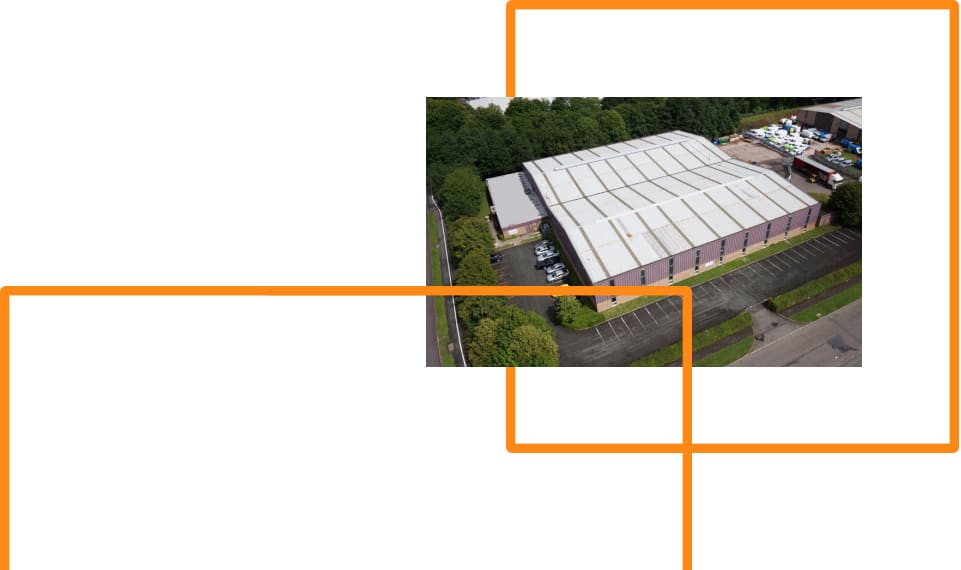
How can we help?
With over 17+ years of knowledge and experience, we’re confident we can offer a flexible solution beneficial to both parties, get in touch with us today.
